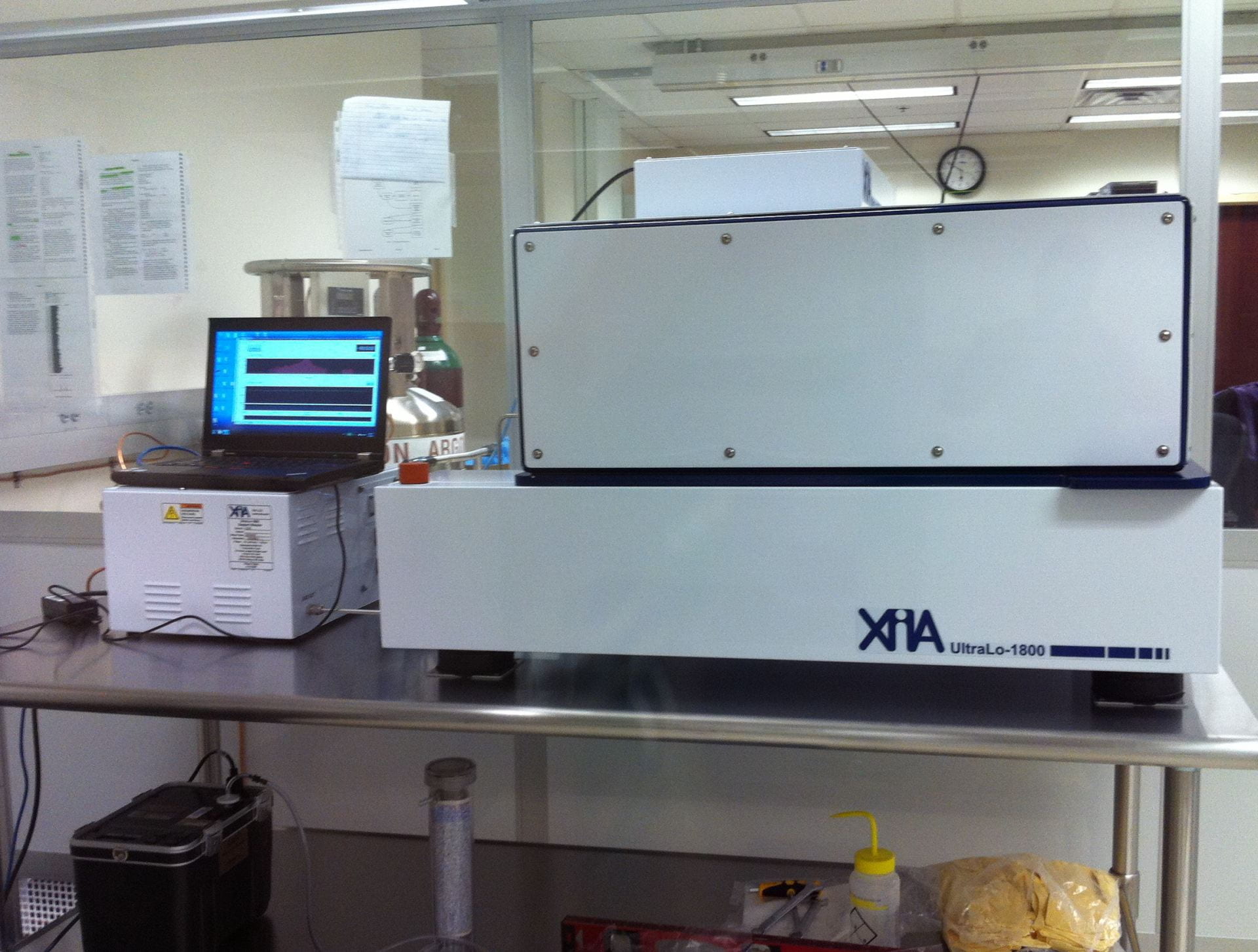We named our laboratory LUMINA (Laboratory for Ultra-pure Material, Isotope and Neutron Assessment) because we know that in order to illuminate the puzzle of dark matter we must operate our experiment in a mode where our backgrounds are under control. This means that our backgrounds (particles that can mimic dark matter) are as low as possible and that any that remain are well understood. We address this problem in our laboratory through a variety of techniques that includes our XIA alpha-particle counter named Peruna, our Ortec Alpha particle counter, simulations and calculations of neutron backgrounds, and data analysis. On this page you can learn more about Peruna and the facilities in our lab.
Introduction to Peruna at SMU
 Most materials emit alpha particles, either because they contain trace amounts of radioactive materials or because they have been contaminated by contact with radioactive materials, most commonly radon in the atmosphere. The ability to measure materials’ alpha particle emissivity (typically expressed as alpha/cm2-hr) therefore becomes important in applications that are sensitive to alpha particles. These include low background fundamental physics experiments – e.g. search for rare decay as direct dark matter searches and neutrino detection measurements – nuclear activities and environmental monitoring, and semiconductor packaging materials production.
Most materials emit alpha particles, either because they contain trace amounts of radioactive materials or because they have been contaminated by contact with radioactive materials, most commonly radon in the atmosphere. The ability to measure materials’ alpha particle emissivity (typically expressed as alpha/cm2-hr) therefore becomes important in applications that are sensitive to alpha particles. These include low background fundamental physics experiments – e.g. search for rare decay as direct dark matter searches and neutrino detection measurements – nuclear activities and environmental monitoring, and semiconductor packaging materials production.
XIA Alpha Particle Counter Technical Features
The UltraLo-1800 is a revolutionary design that employs Electronic Background Suppression to drive achievable background rates to 0.0005 alpha/cm2/hr or lower. This is a factor of 50 or more better than can be achieved by the conventional proportional counter systems that are now commercially available.
- Measure sample emissivities to 0.0002 alpha/cm2/hr and below
- Large sample area – can accept samples up to 1800 cm2
- Accurate results in much shorter counting times
Ortec Alpha Particle Counter
 The Ortec alpha mega particle counter is a compact, all-in-one, bench-top, large chamber, single-channel alpha spectrometer. It employs a Si Diode detector.
The Ortec alpha mega particle counter is a compact, all-in-one, bench-top, large chamber, single-channel alpha spectrometer. It employs a Si Diode detector.
Links for the Public
Learn more about the activities of the SuperCDMS collaboration at our collaboration’s homepage:
https://supercdms.slac.stanford.edu/
Access the radiopurity database here:
https://www.radiopurity.org/